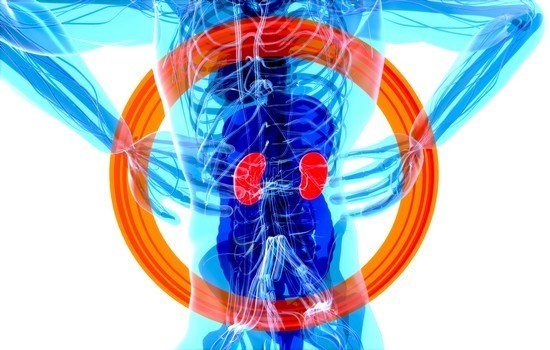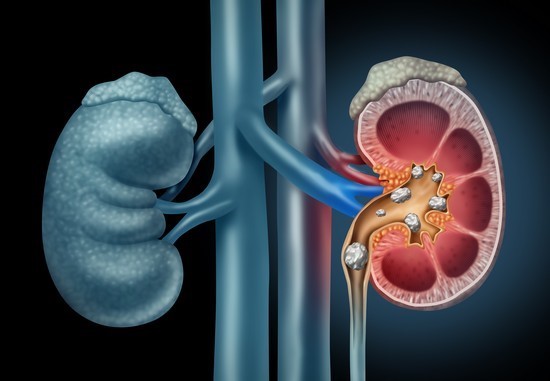Kidney stones are known to be extremely painful, even among those who have
never had one. They are also quite common. Some estimates suggest that one in
ten people will suffer from a kidney stone at some point in their life. For Jordan,
estimates vary, but one study suggests that the prevalence of kidney stones is
5.95 percent. The majority of cases occur among males over the age of 40.
اضافة اعلان
The development of kidney stones is linked to other
health conditions. With a recent increase in such related conditions, the
prevalence of kidney stones has risen. However, with proper care, individuals
can reduce their risk of developing the painful crystals.
The four stages of kidney stones
The fluids in our bodies contain many chemicals, which are regulated by
various physical mechanisms, particularly the kidneys, which help filter out
many water-soluble waste products from our bodily fluids. The final product of
this process is urine.
However, in some cases, there is too much waste in
too little fluid, and the chemical waste is no longer able to stay dissolved.
As a result, crystals begin to form, and their presence attract the formation
of more. These crystal clusters are known as kidney stones, or more formally,
renal calculi.
The process of kidney stone formation starts in the
kidneys, and the formation itself is typically painless. It is when the kidney
stones are passed that an individual experiences pain. The stages of passing
the stones are relatively predictable.

The first stage takes place when the stone detaches
from the inner wall of the kidney. This is often considered the most painful
stage, due to spasms of the kidney. These spasms are the kidney’s way of trying
to remove the stone, and they can occur one to four times per hour. People
experiencing kidney spasms feel a severe pain in the lower back or sides, which
many women who have given birth naturally have reported to be more painful than
childbirth.
By the second stage, most of the severe pain will
have subsided. However, this stage is still incredibly painful. As the stones
leave the
kidneys, they travel down a tube known as the ureter. The diameter of
this tube is only 2-3mm, and the walls are fairly rigid. Any stone that is
larger than the diameter will cause pain. Whereas the pain in the first stage
was intense in nature, the pain in the second stage can be described as
radiating and throbbing. Additionally, people passing a kidney stone may feel a
pressure buildup if the stone becomes stuck.
Once the stone has entered the bladder, the
individual will have entered the third stage. This stage is not painful, but
there will be a sensation of pressure. In an attempt to remove the stone from
the body, you will feel the urge to urinate frequently. However, urination may
be complicated since the stone can become stuck and block urine output. If this
happens, you will need to wait five to 10 minutes before trying again. Finally,
the fourth stage is the passing of the stone through the urethra. Although
there may be little to no pain at this point, this process will require effort.
You will have to squeeze and push hard until the stone passes and is expelled
with the urine. The duration of the entire process from start to finish depends
on the size of the stone and if there are any complications. Assuming there are
no complications, a stone smaller than 4mm can pass in a week or two, whereas
larger stones may take up to four to six weeks.
Types of kidney stones
There are four main types of
kidney stones, each with different causes. The first and most common type is
calcium stones. Of the varieties of calcium stones, calcium oxalate is the most
common, but others include calcium phosphate or maleate. To reduce the risk of
these particular stones, keep your calcium intake consistent and limit foods
containing oxalate such as chips, peanuts, chocolate, and spinach.
The second most
common type of kidney stone is uric acid stones. This type most commonly occurs
among people with gout, a condition in which uric acid levels are high in the
body. Other conditions such as diabetes, obesity, and other types of metabolic
syndrome can increase the risk of uric acid stones. One study found that 68.1
percent of
Jordanians with kidney stones were either overweight or obese. If
you are already at risk of higher uric acid levels, it is best to limit foods
that contain purines. Purine is the precursor to uric acid and can be found in
foods such as animal meat and fish.

The final two types of kidney stones are far less
common. Struvite kidney stones are mostly found among individuals with urinary
tract infections. They can be large and block the flow of urine. Treating the
underlying infection can help prevent the formation of these stones. Finally,
cystine kidney stones are estimated to occur in one out of every 7,000 people
worldwide. This is typically the result of a genetic condition known as
cystinuria.
Signs you might have kidney stones
The severe pain brought on
by spasms is the first and most noticeable sign of a kidney stone. The pain can
occur in the lower back, sides, or abdomen, and for men, it may radiate to the
groin area.
Other common symptoms of kidney stones include blood
in the urine (visible through red, pink, or brown urine), a frequent need to
urinate, and urinating only in small quantities. Kidney stones may also cause
foul-smelling urine, also indicative of a UTI. Other symptoms can include
nausea, vomiting, fever, and chills. The symptoms are largely based on the size
of the stone. Some stones are as small as a grain of sand and others can be the
size of a pebble. Generally, the larger the stone, the greater the symptoms.
In some cases, symptoms can be managed with over-the-counter medications.
If this is the case and there are no signs of infection or severe symptoms such
as nausea or vomiting, then you may not need treatment. However, if you
experience bloody urine, pain or burning while urinating, difficulty urinating,
severe pain, or cloudy or foul-smelling urine, you should seek medical
attention.
Stay hydrated
Hydration is the greatest
preventative measure against kidney stones. There is no set quantity for daily
fluid intake, however, it is recommended that you drink enough to pass
approximately 2.5 liters of urine per day. This will help flush out the
chemicals in urine that form stones. Additionally, moderating and reducing your
intake of oxalate-rich foods can also reduce the risk.
For those who are
already at a higher risk (those who have gout, are obese, and/or have
diabetes), consider speaking to your doctor about general diet restrictions.
Limiting foods such as milk, cheese, and yogurt, as well as animal proteins
such as beef, poultry, and seafood can help reduce the risk of kidney stones.
Additionally, foods such as processed meats, fast food, frozen meals, and salty
snacks should be generally avoided.
Read more Health
Jordan News



